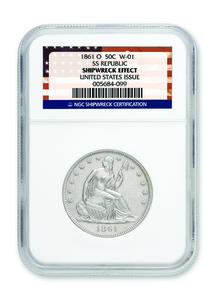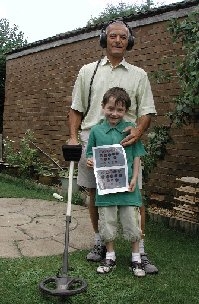Talking to David Hall is like obtaining the Da Vinci Code. But where the famous book and movie code is all about fiction, Hall is all about the facts of numismatics.
He has either done it, is doing it, or will be the first to do it in the future.
Launching the first successful third-party commercial grading firm for coins in 1986, Hall revolutionized the way numismatics conducts itself as a business and the way it is perceived by outsiders.
The role of the Professional Coin Grading Service has been copied by others in the industry and has served as a model for Hall in other collectible fields. His Collectors Universe company is a major player in sports cards, stamps, autographs, paper money and, most recently, diamonds.
In a telephone interview Aug. 3, Hall talks about what he has done and what he will do, notwithstanding the fact that he turns 60 next April. He doesn’t speak like someone who is about to retire. What’s more, he is anxious to share the knowledge that he and his generation of dealers have acquired for the benefit of all.
Hall hasn’t forgotten his roots. He “started selling coins in 1961 when I was a teenager.” He says he began dealing full time in 1972, worked for a few people and then started his own business in 1977.
When asked how he got the idea for a commercial third-party grading service, Hall explained the way things were in numismatics in the early 1980s.
“The coin market was expanding to kind of nontraditional areas. Coins were being sold to gold and silver bugs, investors, people who weren’t really coin collectors. The market did well, attracting more activity from coin people. The market was getting a lot bigger,” he says.
The fly in the ointment at the time, Hall points out, was “there was a pretty big problem with misrepresentation of the product. It happens in all collectibles. This made reputable dealers worried about the future of the marketplace. The solution was a third-party arbitrator of quality.”
At the time, Hall explains, the American Numismatic Association Certification Service “was doing grading with photo certificates. All of that was Abe Kosoff’s idea.”
However, “Photo certificates didn’t complete the job,” Hall declares, adding, “ANACS was not using the very best graders it could.”
In early 1985, he conceived the idea of a “real high quality grading service.” He started talking to John Dannreuther, Bruce Amspacher, Gordon Wrubel and Van Simmons.
“We got pretty serious about it,” Hall says. “We needed some grading talent,” so he recruited Steve Cyrkin and Silvano DiGenova to join the effort.
“Those became the founders of PCGS,” Hall says.
“It was called ‘Professional’ because the pros were doing it. The best graders in the world at the time were dealers.
“We decided to present the idea to a group of the more reputable dealers in August of 1985. I remember it being at the ANA. There were 15 dealers to listen to us,” Hall recollects.
Where some business ideas take time to reach success, to hear Hall tell it, for PCGS, it was quick and the success of the idea was never in doubt.
“It was enthusiastically received, so much so that other dealers found out about it and wanted to be part of the initial launch.” There were 32 authorized dealers originally at the beginning of the business in February 1986, Hall recalls.
Rather than having photo certificates, PCGS encapsulated the coins in tamper-resistant holders and guaranteed the grade.
Here Hall stops to answer a question. What has the guarantee of the grade cost PCGS over the years?
He replies that PCGS has bought back “$200,000 to $300,000 worth of coins a year, about the same percentage of our revenue for over 15 years.”
Hall contrasts that number with the sheer volume of graded coins: “well over 100,000 coins a month. That’s what made us different. We thought we’d grade 3,000 to 4,000 coins a month.”
When PCGS opened its doors, Hall says 18,000 coins were graded the first month, 35,000 the second. It was upward after that. The thing was a huge success from Day One.”
The consequences have been many.
The grading service “spawned so many different things,” Hall says thoughtfully, “Pop(ulation) reports, set registries, electronic dealer trading sight unseen. All of this is possible because of what we did. It has dramatically increased the volume of the coin market.
With prompting, Hall speculates that since the start of PCGS, the coin business is “three to five times larger than it was 20 years ago.” Of that growth, PCGS is responsible for “maybe as much as half of that growth.”
Just what size is the coin market today? Hall pauses to think a bit. “If you don’t count bullion and the U.S. government, it’s probably $3 billion or $4 billion.”
Just what made the notion of third-party commercial grading work so well in promoting growth in the numismatic industry?
Hall reports, “People with 10-20-30 million dollar coin collections told me they would never have bought a single coin without coin grading. … They don’t have time for the aggravation of buying something that has been misrepresented.”
Hall explains that buyers can understand market fluctuations and making a bad buy and losing money because prices drop, but the deal breaker is misrepresentation. Third-party grading took that fear off the table. The rest is history.
Read the rest at Numismatic News.

